 Image search results - "ato" Image search results - "ato" |

Before 8 am: Women do a warm-up lap.It wasn't exactly warm, but they had wet suits. Odaiba's water is not exactly crystal-clear clean either.
|
|

Kanagawa Prefecture's largest Awa Odori is held annually during the last weekend in July in this city of Yamato. Preview event near Yamato Station.
|
|

Yoshino Baigo was a valley and hillside covered with ume plum trees. It boasted a wide variety of different plum blossoms. During full bloom as you can see here, the scenery was spectacular. One of the largest plum groves in Japan.Platform of Hinata-Wada Station with welcome banner 日向和田駅. Banner says, "Yokoso, Ume no Sato Yoshino Baigo." Yokoso means "welcome," and Ume no Sato means "plum town."
To get to Hinata-Wada, you have to change trains at Ome Station on the JR Chuo Line.
|
|
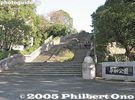
Entrance to the Peace Park
|
|

Women at the starting line for triathlon
|
|
|

Closest train station is Hinata-Wada Station. To get to Hinata-Wada, you have to change trains at Ome Station on the JR Chuo Line. 日向和田駅Sadly, spring 2014 was the last time we could see these trees. The plum trees were infected by the plum pox virus and the city cut down all the trees in 2014 to wipe it out. These photos were taken in 2006 when the plums were still fully glorious. Good news is that they have been replanting since 2016.
|
|

Peace Fountain with the Peace Statue in the distanceA fountain of water was made for the victims who were desperate for water.
|
|

Pre-festival event held in the afternoon, Yamato Awa Odori
|
|

Although still small, the replanted plum trees have been flowering. and the groves have reopened to the public. Yoshino Baigo poster. Yoshino Baigo is a small town in Ome city near Hinata-Wada Station.
|
|
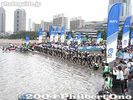
Starting line
|
|
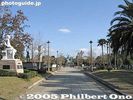
Path to Peace Statue
|
|

8:10 am: And they're off, taking about 30 min. to swim 1.5 km.
|
|
|

Road to Yoshino Baigo. Almost the entire town is lined with plum trees.
|
|
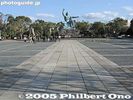
Peace StatueEvery Aug. 9, the anniversary of the atomic bombing, a memorial service is held here.
|
|
|
|

Yamato Station
|
|

Tamagawa River as seen from the bridge.
|
|
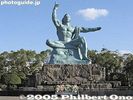
Peace StatueSculptor was Seibo Kitamura.
|
|
|
|

Balloons, souvenirs and trinkets sold near the train station.
|
|

Plum trees line the streets
|
|

The Peace Statue was built in Aug. 1955, the 10th anniversary of the bombing. The Peace Statue was modeled after popular wrestler Rikidozan.
|
|
|
|
|

Yoshino Baigo's main attraction is the Ume no Koen plum park. This is an entrance leading to the park.
|
|

The folded right leg symbolizes quiet meditation.
|
|
|
|

Main drag and shopping arcade called Yamato Chuo-dori大和中央通り
|
|

Ume no Koen park straight ahead, you can see the hill covered with white.
|
|

The right hand points to the threat of nuclear weapons.The bronze statue is 10 meters tall.
|
|
|
|

Spectators wait for the parade to begin.
|
|

Entrance to a temple with a view
|
|

The closed eyes express a prayer for all war victims.
|
|
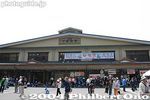
Shimosuwa Station on May 8, 2004. Here for the final three days of the Onbashira Matsuri's climax, the Satobiki when they haul the Onbashira logs to the Shimo-sha Shrines (Akimiya and Harumiya) and erect them.
|
|

Marker and side road to Lord Gamo (Gamoh) Ujisato's gravesite. Near Aizu-Wakamatsu City Hall. Gamo Ujisato (1556-1595) was a feudal lord from Hino, Shiga Pref. He built Tsurugajo Castle and named the town Wakamatsu, after a place in his hometown.
|
|
|

Entrance to Kyu-Shiba Rikyu Gardens, a real oasis in an urban jungle. Another waterfront garden with classic Japanese-style elements with a pond, pine trees, rocks, and stone lanterns.
|
|

Ohmi Railways Toyosato Station. MAP
|
|

Itoh Chube'e Memorial House (Itoh Chube'e Ki'nenkan). Itoh Chube'e (1842-1903) was the founder of Itochu Corporation and Marubeni, two of Japan's largest trading companies, in 1858. MAPThis house displays his former residence and some of his possessions. A short walk from Toyosato Station, the house is open to the public on Tue., Thu., and Sat. Free admission.
|
|

The festival/parade starts before dark.
|
|

Great view from temple (no admission charge). Sadly, this is no more...
|
|
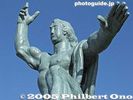
The outstretched left hand symbolizes tranquility and world peace.
|
|

Onbashira monument in front of Shimosuwa Station. This Onbashira log was used in the opening ceremony of the Nagano Winter Olympics in 1998.
|
|

Ujisato was married to Oda Nobunaga's second daughter Fuyuhime. He died at age 40. One theory says that he was poisoned by Toyotomi Hideyoshi. Entrance to Lord Gamo Ujisato's gravesite within Kotokuji temple in Aizu-Wakamatsu, Fukushima..
|
|
|

Kyu-Shiba-rikyu was first built in the 17th century and used as the residence of a number of nobles. Purchased from the Arisugawa family in 1875 by the Imperial Household Agency which made it the Shiba Detached Palace.
|
|

Entrance to Itoh Chube'e Memorial House
|
|

Inside Toyosato Station.
|
|
|

View from temple. The plum pox virus was discovered in 2009. Since then, they have cut down the infected and surrounding trees.
|
|
|
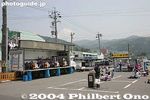
Entertainment stage in front of Shimosuwa Station.
|
|

Entrance doors to Lord Gamo Ujisato's gravesite within Kotokuji temple which is a Zen temple of the Rinzai Sect.
|
|
|
|

Bird's eye view of Kyu-Shiba Rikyu Gardens as seen from Hamamatsu World Trade Center
|
|

Entrance to Itoh Chube'e Memorial House
|
|
|
|
|
|
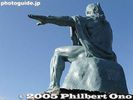
The left leg is poised for action to assist humanity.
|
|
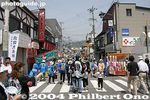
In front of Shimosuwa Station.
|
|

Family crest on door. (Not the Gamo crest.)
|
|

Turn-around point for another lap.
|
|

The buildings were destroyed in the Kanto Earthquake in 1923 and the property was donated to Tokyo in 1924 to commemorate the start of Emperor Showa's reign.
|
|

Front garden
|
|
|
|
|

About 120 varieties of plum blossoms are planted, attracting 60,000 to 100,000 visitors during the flowering season.
|
|
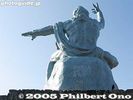
Rear view
|
|
|
|
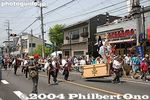
Parade of Nagamochi which are long chests. 長持
|
|

Grounds of Lord Gamo Ujisato's gravesite within Kotokuji temple. Since Ujisato was a Christian lord, it is ironic that he be buried in a Buddhist temple in Kyoto and Aizu-Wakamatsu.
|
|

Out of the water and racing to the bicycles.
|
|
|
|

Front garden
|
|
|

Near the entrance to Ume no Koen plum blossom park that opened in March 1972.
|
|

Peace Statue description
|
|
|
|
|

Pine trees and pond
|
|
|

Maid's room
|
|
|

Ume no Koen (Plum Park) is a public park open from 9 am to 5 pm.
|
|

Monument next to Peace Statue
|
|
|

Poem monument reads 限りあれば吹かねど花は散るものを心短き春の山風
|
|

Taking off the wet suit and getting on the bicycle.
|
|
|

Inside entrance. The house was occupied by Itochu company founder Itoh Chube'e and his son, Chube'e II.
|
|

Toyosato Station platform.
|
|
|
|

200 yen admission charged during March only. But I went on April 1 so it was free (and full bloom).
|
|
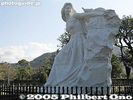
Peace memorial from ChinaThe park also has peace monuments from various countries.
|
|
|

Path to Lord Gamo Ujisato's gravesite
|
|
|
|
|

Shopkeeper's desk
|
|
|

White weeping plum blossoms
|
|

Nagasaki atomic bomb peace park hypocenter
|
|
|
|

Lord Gamo Ujisato's grave.
|
|
|
|

Shopkeeper's desk
|
|
|

Red weeping plum blossoms at park entrance
|
|

Peace memorial from Germany
|
|
|
|

Lord Gamo Ujisato's grave. This is a secondary grave, where his hair is buried. His main grave is at a temple in Kyoto where he died at age 40.
|
|
|

Shopkeeper's desk
|
|
|
|

Red weeping plum blossoms
|
|

Bicycle the pavement for 40 km, taking about an hour.
|
|

Peace memorial from Czechoslovakia
|
|
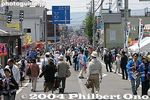
Crowded street
|
|

Main entrance to Aoyama Cemetery during cherry blossom season in early April. Gaienmae Station (Ginza/Hanzomon Line) and Nogizaka Station (Chiyoda Line) are the closest subway stations.
|
|
|
|

Entrance to Tonogayato Teien Garden, 2-min. walk from Kokubunji Station.
|
|
|

Butsudan Buddhist altar in a butsuma (Buddhist altar room).
|
|
|

Red weeping plum blossoms
|
|

Hypocenter of atomic bomb, adjacent to Peace parkAlmost right next to the Peace park is the hypocenter marker above which the bomb exploded. Often hoards of students on class trips can be see squatting here listening to a talk about this place.
|
|
|

The tombstone has five segments each with a kanji character. 五輪塔
|
|

Cycling for triathlon
|
|

Map of Tonogayato Teien Garden.
|
|

Koi carp fish
|
|

Tokonoma alcove and scroll. 奥の間
|
|

Aoyama Cemetery office near the main entrance where you can obtain a map of the cemetery and ask where particular people are buried. The maps they provide do not show where the most famous people are (such as prime ministers).
|
|

Mime act depicting a kite
|
|

Pink and white weeping plum blossoms
|
|
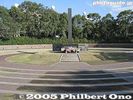
Hypocenter of atomic bombA series of concentric circles emanate from the marker.
|
|
|
|

Main thoroughfare, lined with cherry trees, cuts through the middle of the cemetery where cars whiz by. Quite irritating.
|
|

Explanation of the kanji characters on the tombstone. From top to bottom, the characters are for "Sky, wind, fire, water, and earth."
|
|
|

Greenery greets you first.
|
|

Bracing a pine tree for winter snow.
|
|

In 1998, the house was donated to a local foundation. In 2002, the house was opened to the public.
|
|

A fool's dance.
|
|

White weeping plum blossoms
|
|

Hypocenter markerOn August 9, 1945 an atomic bomb exploded in the sky about 500 meters above the point where this monument now stands. The area within a 2.5 kilometer radius of the hypocenter was completely devastated.
|
|
|

Cherry blossom tunnel at Aoyama Cemetery.
|
|

Portrait of Lord Gamo Ujisato
|
|

Spare wheels
|
|

ハナモモ はなかいど
|
|
|

Exhibits of Itoh Chube'e II, the son of the founder Chube'e (1842-1903).
|
|

End of the parade route.
|
|

Pink weeping plum blossoms
|
|
|

Aoyama Cemetery is one of Tokyo's noted spots for cherry blossoms. However, having hanami picnics is not allowed.
|
|

Cherry blossoms are so fleeting. They last for only a short time, like life itself. And so cherry blossoms are often found at cemetaries in Japan.
|
|
|

These trees stood out.
|
|
|
|
|

Cherry blossoms and graves.
|
|

Hypocenter description
|
|
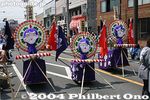
Nagamochi chest decorations
|
|
|
|
|
|
|

Bust of Itoh Chube'e II (1886-1973), his walking sticks, bag, and shoes.
|
|

Aoyama Cemetery map. Quite complicated system to find grave plots.
|
|
|

With about 1,300 plum trees, this park is probably Tokyo's largest plum tree grove.
|
|

Remains of Urakami Cathedral wallNext to the hypocenter is this partial cathedral wall.
|
|
|

Kotokuji temple
|
|
|
|
|

Yukimi Stone Lantern
|
|

Kitchen
|
|

Signs tell you where you are. Quite bewildering mapping system.
|
|
|

Work of art by nature
|
|
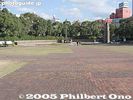
Hypocenter
|
|
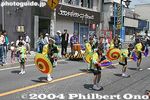
Umbrella dance
|
|
|
|
|
|
|

Aoyama Cemetery has over 123,000 graves occupying 125,000 square meters within the cemetery land area of 263,564 sq. meters.
|
|

Yamato Awa OdoriHeld in late July, Kanagawa Pref.
|
|

Path in plum park
|
|

Memorial at hypocenterErected in July 1995 for the 50th anniversary.
|
|
|
|
|
|
|

Kitchen
|
|

This is the Foreigner's Cemetery where many foreigners who helped to modernize Japan are buried.
|
|

Chidori-ren troupeちどり連
|
|
|
|

Nagasaki Atomic Bomb Museum. Next to the hypocenter is the atomic bomb museum and registry shelf which stores the names of the atomic bomb victims.
|
|
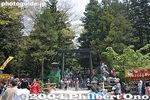
Shimo-sha Akimiya Shrine torii
|
|
|
|
|

Dry waterfall
|
|

Stove 炊事場
|
|

A monument erected in March 2007 by Tokyo Governor Ishihara Shintaro in appreciation of the foreigners who helped build Japan.
|
|

ちどり連
|
|

Path on hillside of plum trees
|
|

Registry Shelf storing the names of atomic bomb victims
|
|
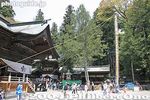
Shimo-sha Akimiya Shrine. That's a support pole for erecting the No. 1 Akimiya Onbashira log. 秋宮
|
|

Hanamomo
|
|

Stone monuments
|
|

Western-style bath from the early 20th century. Very unusual at the time. 西洋風バスルーム
|
|

List of foreigners buried in this Foreigner's Cemetery. Note that there also other foreigners buried in other parts of Aoyama Cemetery.
|
|

Yamato Awa Odori
|
|

Hillside plum trees
|
|
|

The Registry Shelf points to the hypocenter.
|
|
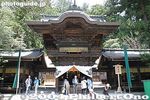
Shimo-sha Akimiya Shrine 秋宮 幣拝殿
|
|

Baskets for running shoes
|
|

Hanamomo
|
|

Bathroom sink
|
|

Foreigner's Cemetery 外国人墓地
|
|
|

White plum blossoms
|
|

Nagasaki Atomic Bomb Museum entrance
|
|

Hole for the No. 4 Akimiya Onbashira log
|
|

Changing from bicycling to running.
|
|

しゃが
|
|

Bridge to Nakashima island
|
|

Built in 1935, a memorial for Itoh Chube'e in Kurenai Park. くれない園
|
|

Foreigner's Cemetery 外国人墓地
|
|
|

The park has about 120 varieties of plum blossoms. You can see how different they look.
|
|

Small support poles.
|
|
|
|

Changing into running shoes.
|
|

Bamboo grove
|
|

Nakashima island
|
|

Memorial marking Itoh Chobe'e's house, right near Itoh Chube'e's house. Chobe'e was Chube'e's older brother and co-founder of Marubeni Corporation.
|
|

Grave of Edoardo Chiossone (1833-1898), an Italian who introduced printing technology (for money and stamps) to Japan. He loved Japan and amassed a huge collection of Japanese art, especially woodblock prints. The collection is donated to a Genova museum.
|
|
| 2175 files on 9 page(s) |
1 |
 |
 |
 |
 |
|